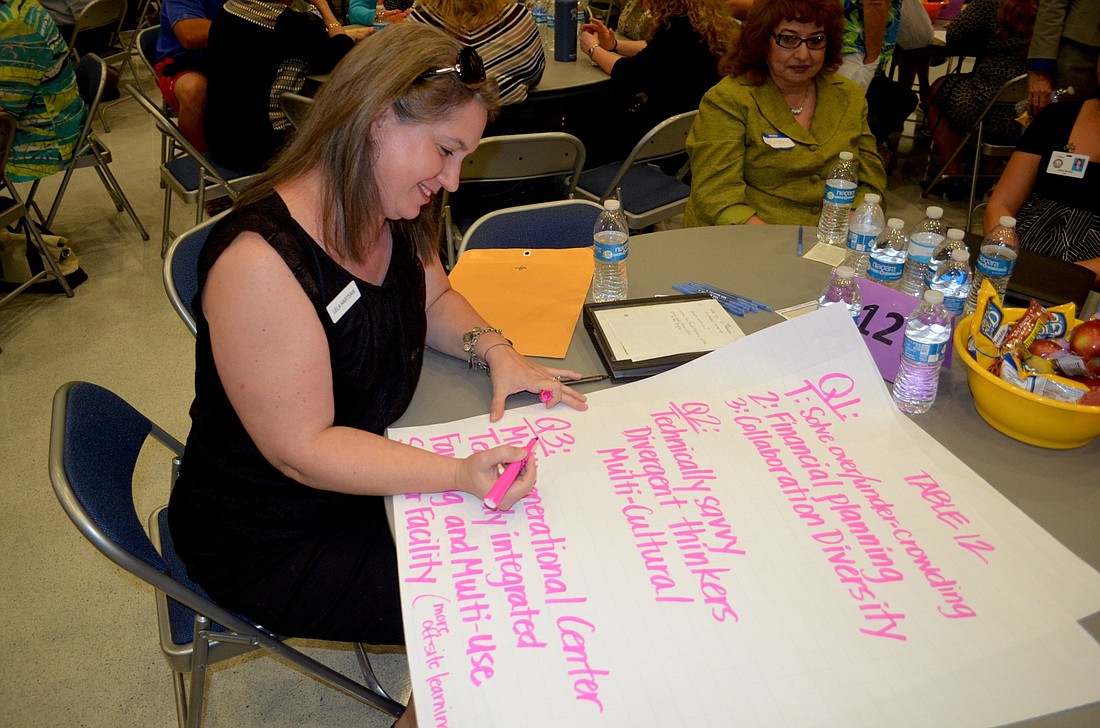- April 19, 2024
-
-
Loading

Loading

EAST COUNTY — As she smiles at her daughter coloring a homework assignment with markers, Stefanie Lis knows the way her daughter is learning at her East County elementary school doesn't reflect her own educational upbringing.
"Students have more and more choices and technology available to them today," Lis said. "It's a different world."
And, DeJong-Richter Chief Executive Officer Tracy Richter thinks a different approach to learning is good.
"The adage, 'It worked for me, it'll work for my kids' is bunk," Richter said. "The way our children are learning is changing, and our schools need to reflect that change."
Richter, a consultant hired by the Manatee County School District to help lead its master planning process, is working on a plan to revamp outdated school buildings and bring classrooms up to date with technology and learning environments better suited to the 21st century.
He presented an overview of his plans for county school facilities Sept. 24 at the Educational Futures Conference at Manatee Technical College.
More than 150 people attended the session, which was held by the district to involve the community in the planning process for facilities.
In April, the school board approved the firm to start evaluating the county's demographics, school populations, condition of facilities and other criteria to determine which schools buildings need the most work.
"We'll decide if some buildings need to be torn down or just need some love," said Robert Johnson, the district's director of planning and management.
Learning isn't just a result of homework and lesson plans. School buildings play a critical role in students' learning experiences, Richter said.
Possible improvements to those buildings could include bringing more technology into classrooms and changing classroom layouts to make them technology-friendly.
"We need blended environments in your schools," Richter said. "Computers don't solve everything, but students are growing up in a world filled with technology. Meeting that demand without relying completely on computers to lead lessons is the goal."
He also believes schools need more spaces that foster group learning.
Although an A student, 18-year-old Amy Danielle Ortiz Padelford thinks more collaborative learning might have helped her perform better in school. She is dyslexic and often needed her classmates to read questions or assignments to her.
"All students don't learn the same, and that isn't being addressed right now," Padelford said.
Open study spaces and larger tables for group collaboration are tools that could help better educate today's changing student, event attendees agreed.
"The facility a child walks into should improve the child's learning experience in some way," Richter said. "There are few work environments where employees sit for eight hours a day. We're here to build buildings that will withstand change."
Richter hopes buildings with more technology and group learning will also help county schools gradually steer away from a "factory-style way of learning."
"We have ringing bells, separate subjects and we educate children in batches based on grade levels," Richter said. "Our country has a very production-line mentality in terms of education. We're just offering a new look at how we view learning, starting with our school buildings."
Contact Amanda Sebastiano at [email protected].